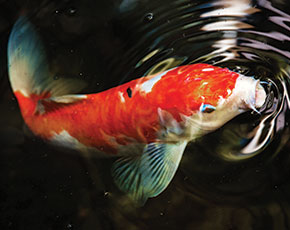To be represented in mass media, particularly in America, is to be validated. Absence is erasure. As a social institution whose influence is barely rivaled by family, religion, or education, the mass media provide a curriculum, a way of learning about ourselves and the world around us. What do we learn? As is the case with people we are unlikely to meet or have not yet met in person, knowledge of members of other species that comes almost entirely from television, movies, the Internet, or other symbolic means, is likely to be stereotypical.[23]Advertising, news, cinema, television programs, and the Web are carriers of deliberately constructed messages that use animals and their images in ways that directly and indirectly impact animal and human lives.
Children learn from the media. In some cases, it is the only place they learn about aspects or individuals in the world who are unlike them. Corbett[24] writes that that there are three ways to learn about nature: 1-directly (being in nature), 2-indirectly (zoos, aquaria), 3-symbolically (mediated forms). The more removed a child is from direct nature experiences, the more likely he or she will have a distorted view of it and those who inhabit it. Thus, the kinds of representations, the language used to describe animals, all matter in not creating an overly positive image or overly negative apprehension. When animals are rendered symbolically (such as in animation), the circumstances and conditions of their real lives are made invisible. As a result, they are even more vulnerable, particularly when they are laughed at, presented as fools, or used as symbolic stand-ins for human emotions (in greeting cards, comic strips, commercials, and multi-media content). Rather than bringing us closer in understanding them, which is what healthy levels of anthropomorphism can do, these representations further distance them from us. One of the consequences is that, in the case of endangered species, repeated exposure in media tends to result in viewers believing animals such as chimps are less endangered than they actually are.[25] Representations of predatory animals such as sharks, bears, cougars, and wolves can make people more fearful and distrustful than is necessary.[26]Furthermore, to represent animals as only bad or only good not only belies their true nature, but also represents real risk to them and to us. It is important to think how real animals and animated animals are used in media.
Representation is a tool of power and a dynamic that needs to be studied to reveal how it reifies the human/non-human dichotomy and ideological screening. For example, American news coverage of farmed animals typically reinforces the status quo agribusiness view of them as bodies not beings, tending to objectify them discursively through: 1) commodification, 2) failure to acknowledge their emotional perspectives, and 3) failure to describe them as inherently valuable individuals; while the news sometimes addresses farmed animal welfare, discussions of whether it is right for us to breed, use, kill, and eat them are rare.[27]
Drawing on John Dewey, animals “do not float unsupported; they do not even just rest upon the earth. They are the earth in one of its manifest operations. It is the business of those who are concerned”with animals “to make this fact evident in its various implications” (ital orig).[28]
References
[23] For more on this, see Merskin, D. (2010). Media, Minorities, & Meaning: A Critical Introduction. New York: Peter Lang. And Wilson, C. C., Guttierez, F., Chao, L. M. (2003). Racism, Sexism, and the Media. Thousand Oaks, CA: Sage.
[24] Corbett, J. B. (2006). Communicating nature: How we create and understand environmental messages. Washington, DC: Island Press.
[25] Schroepfer, K. K., Rosati, A. G., Chartrand, T., & Hare, B. (2011). Use of “entertainment” chimpanzees in commercials distorts public perception regarding conservation status. PLOS ONE. http://www.plosone.org/article/info%3Adoi%2F10.1371%2Fjournal.pone.0026048
[26] Røskaft, E., Bjerkec, T., Kaltenbornc, B., Linnellb, J. D. C., Andersen, R. (2003). Patterns of self-reported fear towards large carnivores among the Norwegian public. Evolution and Human Behavior (24), 184-198. And Peschak, T. P. (2014). Sharks and people: Exploring our relationship with the most feared fish in the sea. Chicago: University of Chicago Press.
[27] Freeman, C. P. (2009). This Little Piggy Went to Press: The American News Media’s Construction of Animals in Agriculture. The Communication Review, 12(1), 78 -103.
[28] Dewey, J. (1954). Art as experience. New York: Putnam, pp. 3-4.
For citation purposes, this page was last updated December 2014

